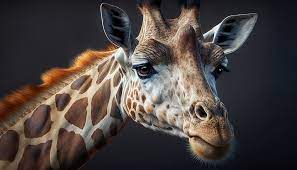To See: Night and Day
- All animals of the universe!

- Feb 6
- 2 min read
Updated: Feb 26
Nocturnal vs. Diurnal Animals
When discussing the fascinating world of animal behavior, one of the most intriguing distinctions is between nocturnal and diurnal animals.
Nocturnal Animals are those that are primarily active during the night and have adapted to thrive in low-light conditions. These creatures have evolved various adaptations that enable them to navigate, hunt, and socialize in darkness. Common examples of nocturnal animals include owls, bats, raccoons, and many species of rodents. Their adaptations often include enhanced night vision, which allows them to see in dim lighting, as well as heightened senses of hearing and smell to detect prey or avoid predators in the dark.
On the other hand, Diurnal Animals are those that are active during the daytime. These animals have developed characteristics that suit their lifestyle in bright light, such as excellent color vision, which helps them identify food sources and communicate with others of their species. Examples of diurnal animals include humans, most birds, and many mammals like elephants and monkeys. The ability to be active during the day allows these animals to take advantage of the warmth and light provided by the sun, which can be crucial for their feeding and social behaviors.
The differences in activity patterns between nocturnal and diurnal animals also lead to varying ecological roles. Nocturnal animals often play essential roles in controlling insect populations, pollination, and seed dispersal, while diurnal animals contribute to similar ecological functions during the day. The coexistence of these two groups can create a dynamic balance in ecosystems, as they often occupy different niches and reduce competition for resources.
Furthermore, the adaptations of nocturnal and diurnal animals extend beyond physical traits; they also Encompass Behavioral Strategies.
Nocturnal animals may exhibit behaviors such as burrowing or seeking shelter during the day to avoid predators.
While diurnal animals might engage in social activities, foraging, or mating rituals that are optimized for daylight hours. This divergence in behavior not only highlights the adaptability of these species but also underscores the intricate relationships they maintain with their environments.
In conclusion, the distinction between nocturnal and diurnal animals is a captivating subject that reveals much about the diversity of life on our planet. By understanding the adaptations, behaviors, and ecological roles of these two groups, we gain valuable insights into the complex web of interactions that sustain ecosystems and the evolutionary pressures that shape the lives of these remarkable creatures.












Comments